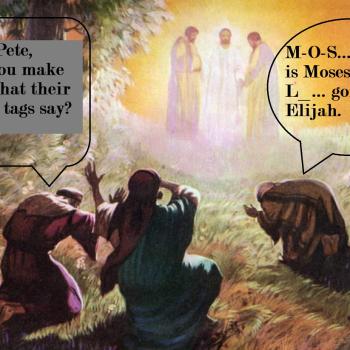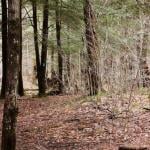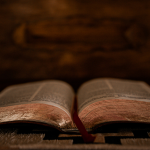Today’s touring and exploring started at the Mount of Beatitudes.

The beatitudes are, as typically in Christian tradition, presented in the Matthean version around the church and site, and so the contrast between Luke’s “Blessed are you who are poor” and the relatively rich site is not felt as strongly as it might be.
We also visited Tel Dan, which is not only the location where the famous “house of David” inscription was found, but also home to a significant total construction…

… and a nature reserve where the nearby spring quickly turns into a powerful flowing stream of cold water.

Tel Qedesh is another interesting site, relatively neglected compared to others I have mentioned. And then we began to focus attention on some tombs, an interest Eldad and I share. I got to witness some Orthodox Jews praying at tombs, which supposedly belong to famous rabbis.

Some of the tombs have intriguing features, such as the one Eldad has written about previously with a fish above the entrance to the inner part of the tomb.

The fish has received some damage, but not as extensive as what we would find at the “G Tomb” that was the subject of his recent article in The Bible and Interpretation. It is a site that has a synagogue, and the surface littered with pottery shards. But there are also several water pits (out of each of which a tree has sprouted), a tomb, a variety of buildings as well as objects the precise function of which we could not identify, and of which I will share some photos in a separate post asking for suggestions. But here is the tomb, the roof of which was blown off.

Although this vandalism may have been motivated by the fact that there are some missing soldiers who have yet to be found, and there was some indication that someone might have broken into the tomb recently (perhaps to hide a corpse?), it still seems unnecessarily destructive, not to mention the fact that the IAA is supposed to be notified and document a site before any damage that may be unavoidable is done to it. But when there is history on every side of you, if you want to build then you have to destroy historical remains. I saw this not only in the case of the detonation destroying the top of the “G Tomb” but also in the form of a highway cutting through a Phoenician ruin.

One interesting topic of discussion along the way today was this one: if a site that was not representative of developing rabbinic orthodox Judaism, but was connected with Judeo-Christians, were to be discovered, what sorts of features might distinguish it, if any? Do you think it would be distinguishable from other Jewish sites? If so, in what ways?












